Anti-theft alarm, detailed description
| Anti-theft alarm, detailed description |
| General |
The body control module (BCM) is the control module which contains all anti-theft alarm logic. All door switches, including those for the boot lid and bonnet, are connected directly to the BCM. These switches (but not the bonnet switch) can be diagnosed. The BCM is therefore able to trigger the anti-theft alarm if any of the diagnosable connections are manipulated while the alarm is armed.
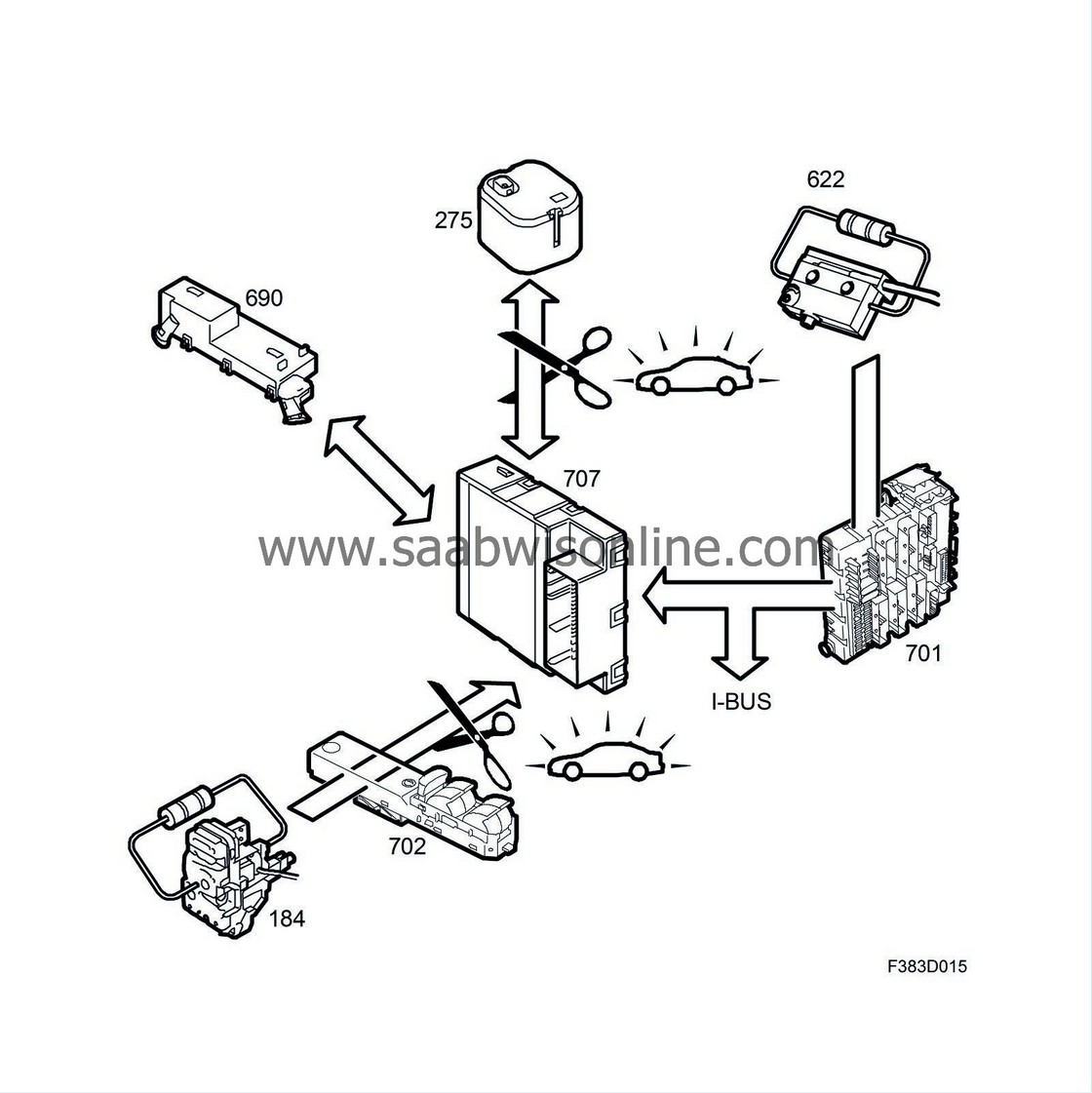
If the transport fuse is not in place in the UEC (underhood electrical centre) then the car is in transport mode and the theft alarm cannot be armed. If the alarm is armed, the car cannot be put in transport mode.
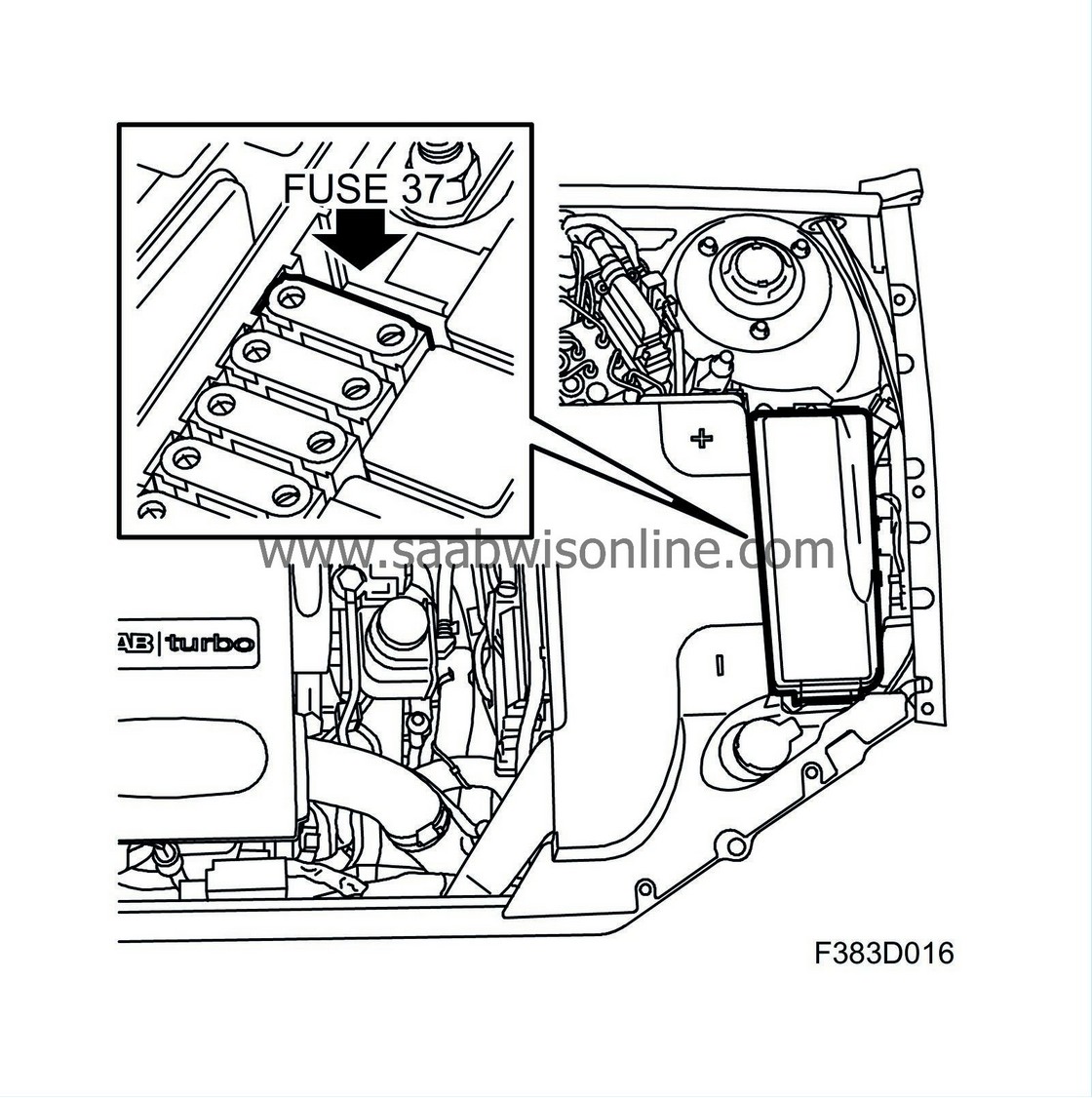
| Arming with the remote control |
The alarm will be armed when the car is locked using the remote control as long as the driver's door is closed and the car was able to lock. The remote receiver is located in the column integration module (CIM) and checks that the remote control's code is approved, identifies the remote control, and checks which button has been pressed and how it has been pressed.

The theft alarm cannot be armed when the key is inserted in the ignition.
| Partial arming, arming with door/boot lid open |
If the car is armed while one or more doors or the boot lid has been open, only the ones that are closed will be armed. The open ones will be armed after closing them. The theft alarm sensor is armed only when all the doors and the boot lid are closed.
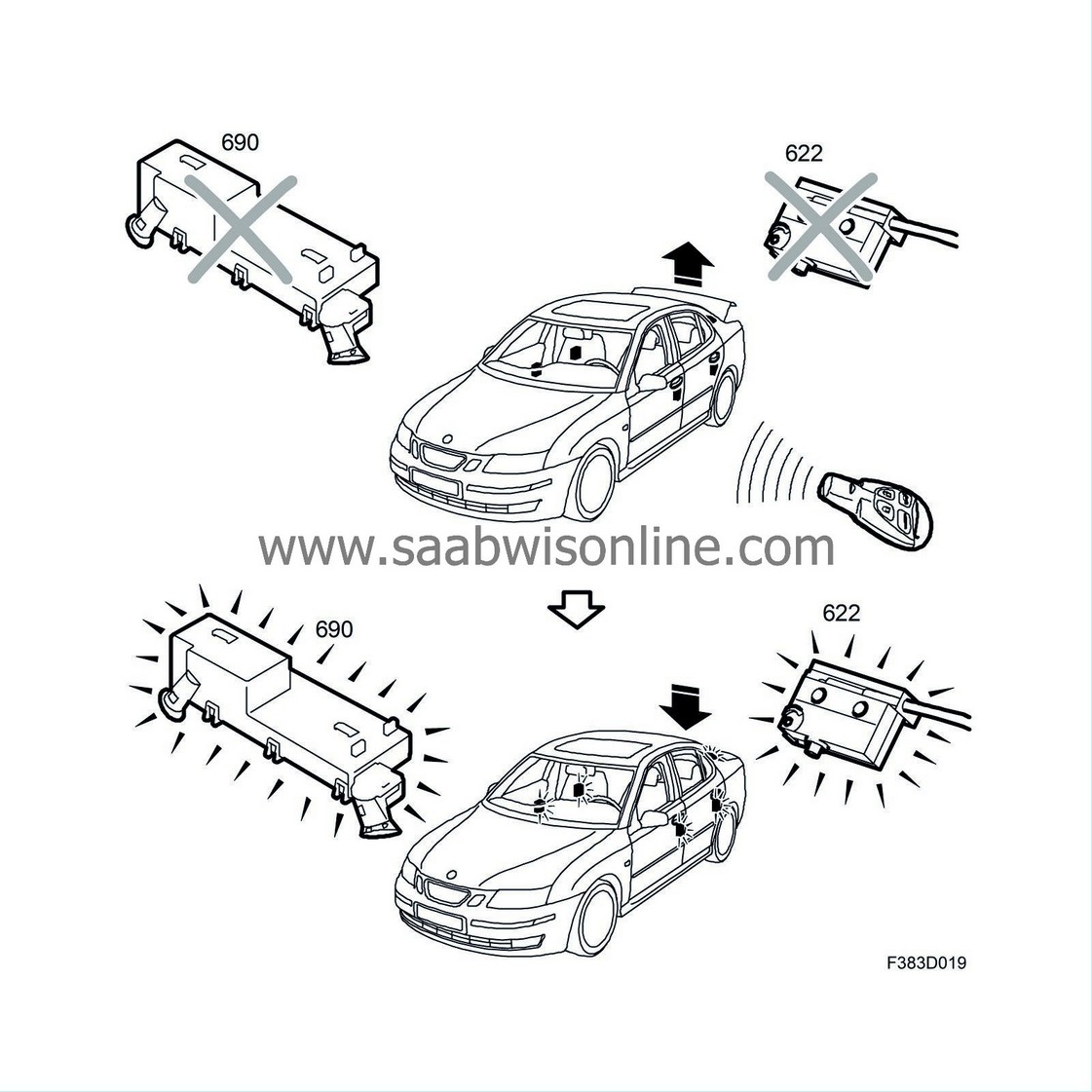
| Arming with theft alarm sensor disengaged |
The movement and angle detection can be disengaged temporarily from the SID unit and its control panel (SIDC). This may be necessary when on a ferry or if you leave an animal in the car. The sensors can be disengaged before leaving the car and locking it with the remote control. The theft alarm will automatically return to full detection once it is armed again after a period with the ignition on/off.

| Arming with open soft top |
If the anti-theft alarm is armed when the soft top is open, the movement detector is automatically disengaged.

| Rearming after opening/closing the boot |
On certain markets, rearming after opening/closing the boot can be activated. This function can also be selected using the diagnostic tool. Rearming arms the theft alarm after 30 seconds if the car has been armed and the boot has been disarmed by unlocking it or opening it with the remote control and then closing it again.
| Rearming after inadvertently unlocking with remote control |
The central locking system has an automatic locking function that affects the theft alarm. Unless the boot lid or one of the doors has been opened within 3 minutes after unlocking with the remote control, the fuel filler flap, all the doors and the boot lid will lock automatically. In this case, the theft alarm will be rearmed but there will not be any acoustic or visual indication.
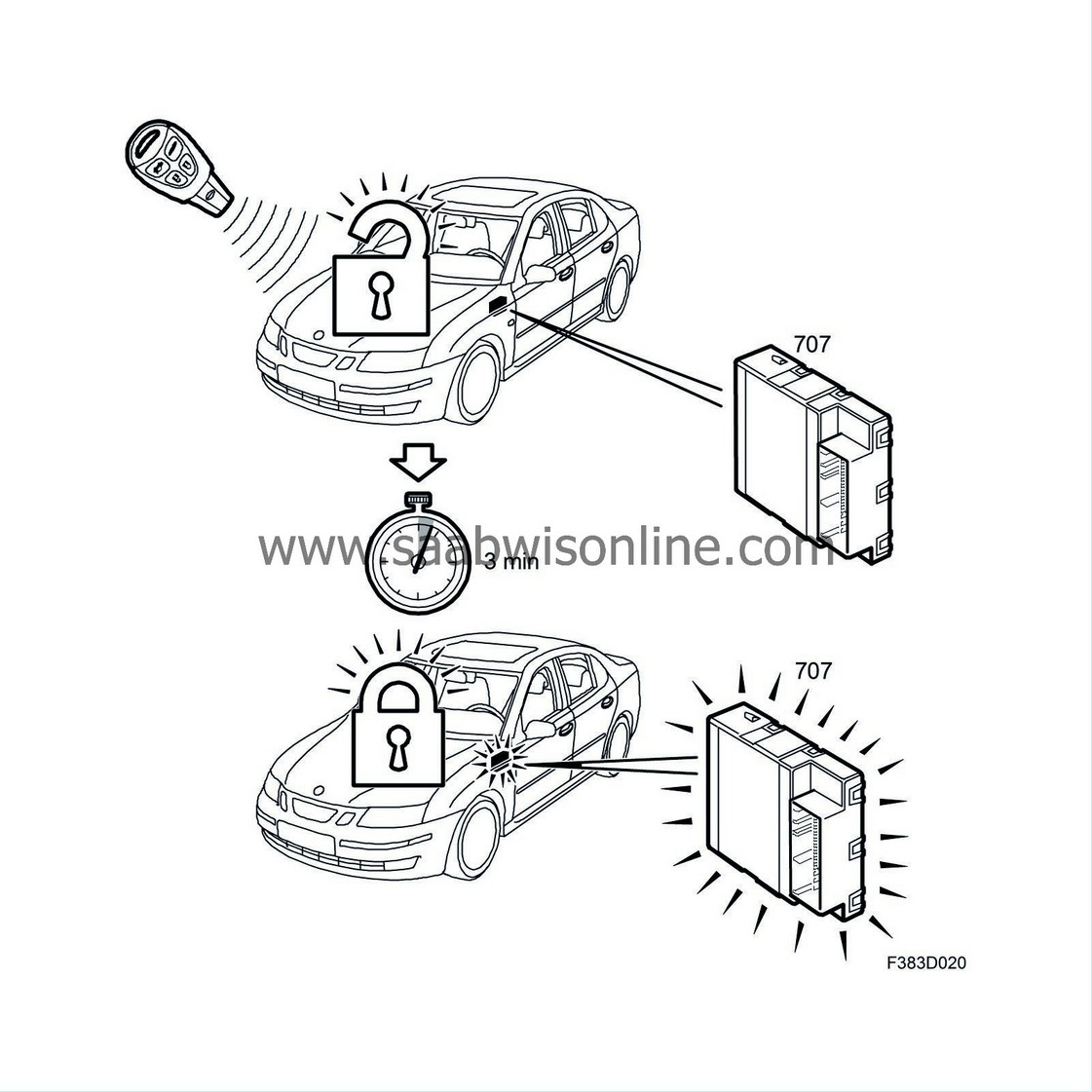
| Disarming with the remote control |
The theft alarm is normally disarmed with the unlock button on the remote control. If the boot lid is unlocked or opened using the remote control, the boot lid switch will be disarmed together with the ultrasound sensor and angle sensor. When the remote control is used to unlock either the doors or the boot lid, an activated (triggered) alarm will be deactivated and disarmed.
| Disarming with the transponder |
In the event of a remote control fault, the front left door can be unlocked using the mechanical emergency key and then opened. The anti-theft alarm will then be triggered, so it is then necessary to place the key in the ignition switch and turn it to the "OFF" position. The alarm will be deactivated and disarmed when the key's transponder code is approved.
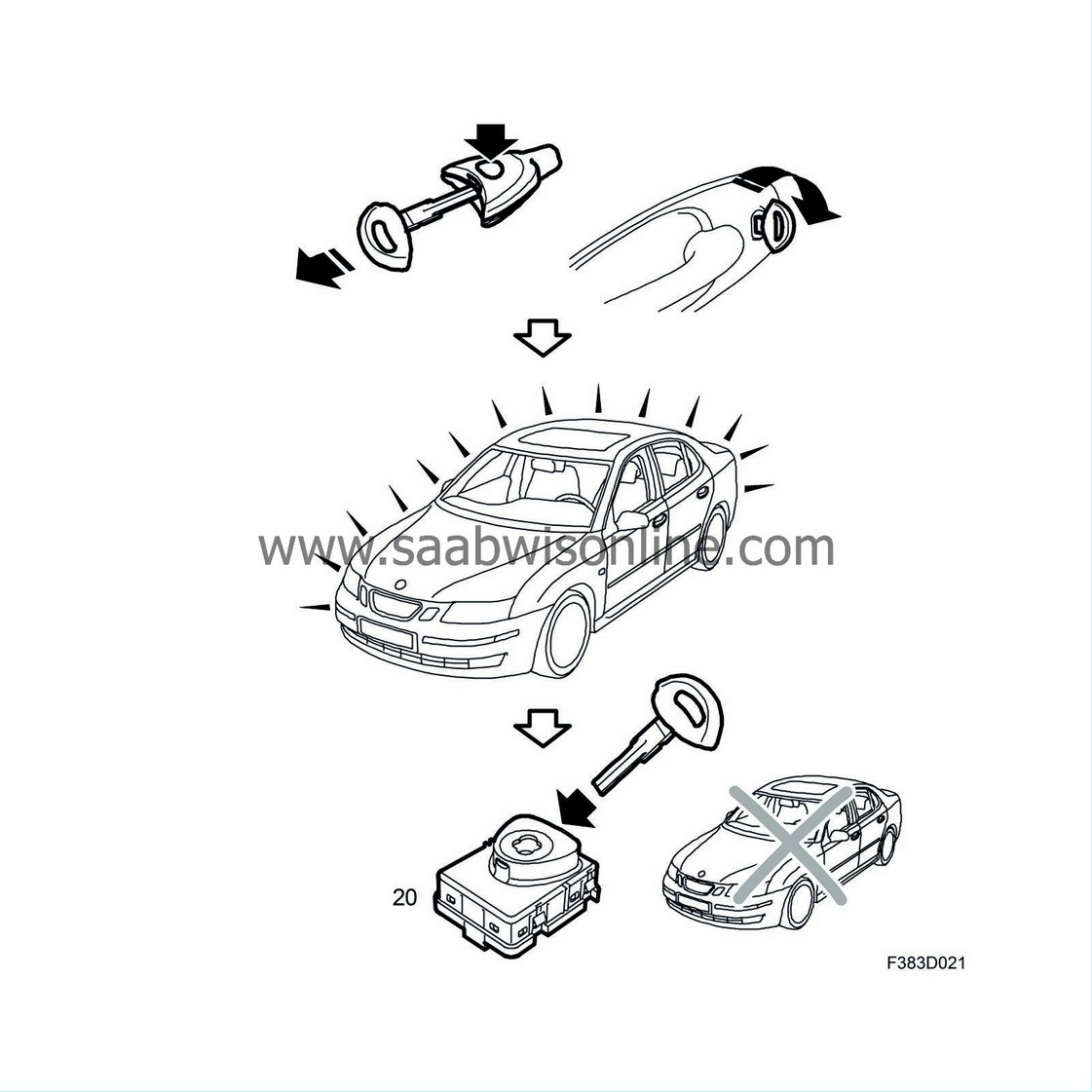
| Indication of theft alarm status |
The status of the anti-theft alarm is indicated by an LED in the SID module. The LED is powered directly from BCM. It may be useful to know that the LED is also used to indicate a change in status for the immobiliser. If the key transponder is approved when the key is inserted in the ignition switch, the LED responds with 4 double flashes in a period of 3 seconds. The same occurs when the key is removed from the ignition and the car is immobilised. If the wrong key is used, the LED does not flash.
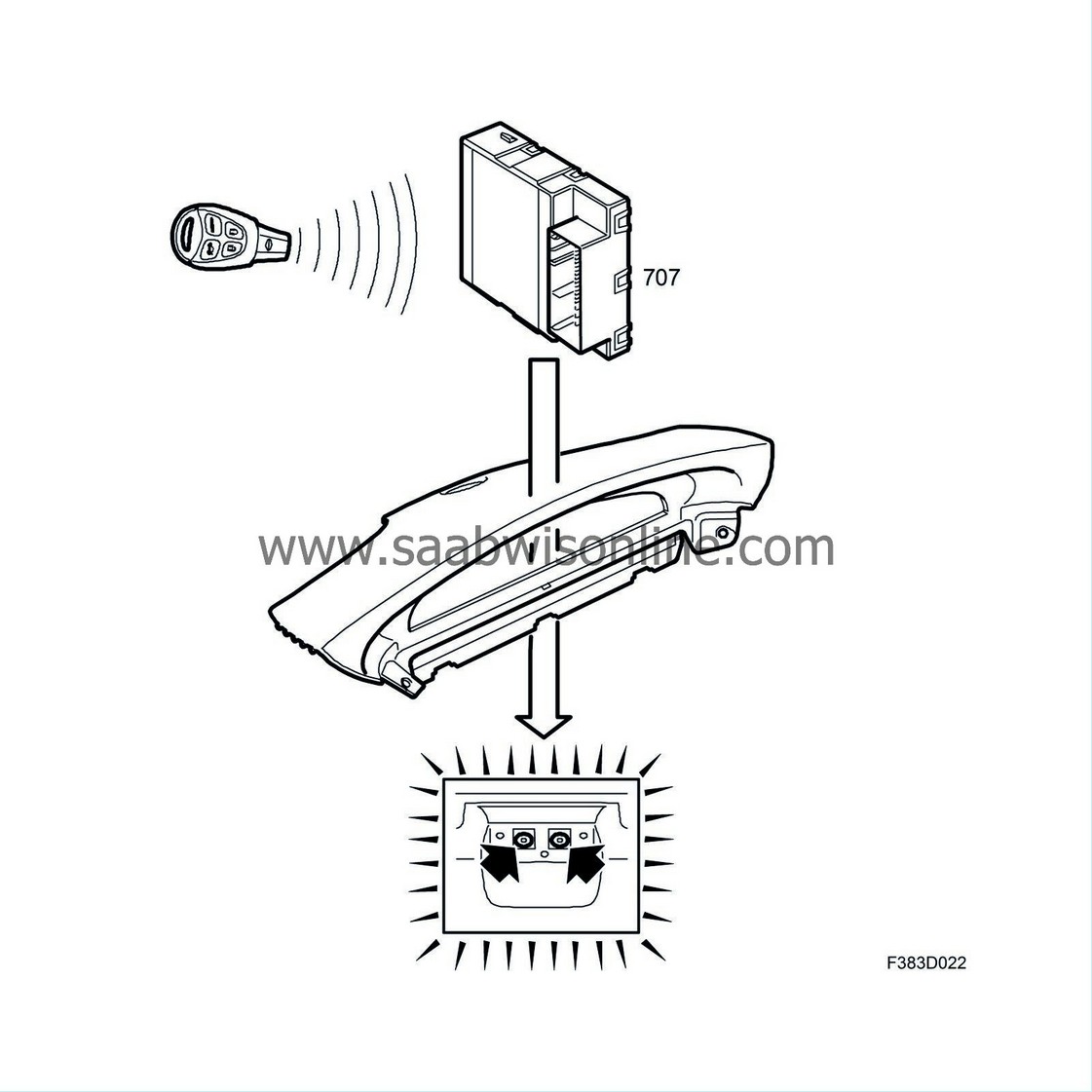
The LED indicates the following alarm status:
| Status of alarm | Visual indication from LED in SID |
| Arming | On until alarm finished arming, 11 s. |
| Armed | One flash every 3 s. |
| Disarmed | Extinguished |
| Armed with error (incl. open door). | 3 flashes per second for 11 s. Then as for armed. |
| Note | ||
|
If the siren has been manipulated with in an armed state and has therefore self-activated, it will sound for 10x30 seconds with a 6 second interval between each period. |
| Panic alarm |
The panic alarm is activated with a special button on the remote control or the central locking buttons in the front doors irrespective of whether the car is alarmed or not. It is activated by pressing any of the aforesaid buttons for longer than 2 seconds. The panic alarm activates the horn/siren and direction indicators for 3 minutes. One short press deactivates the alarm.
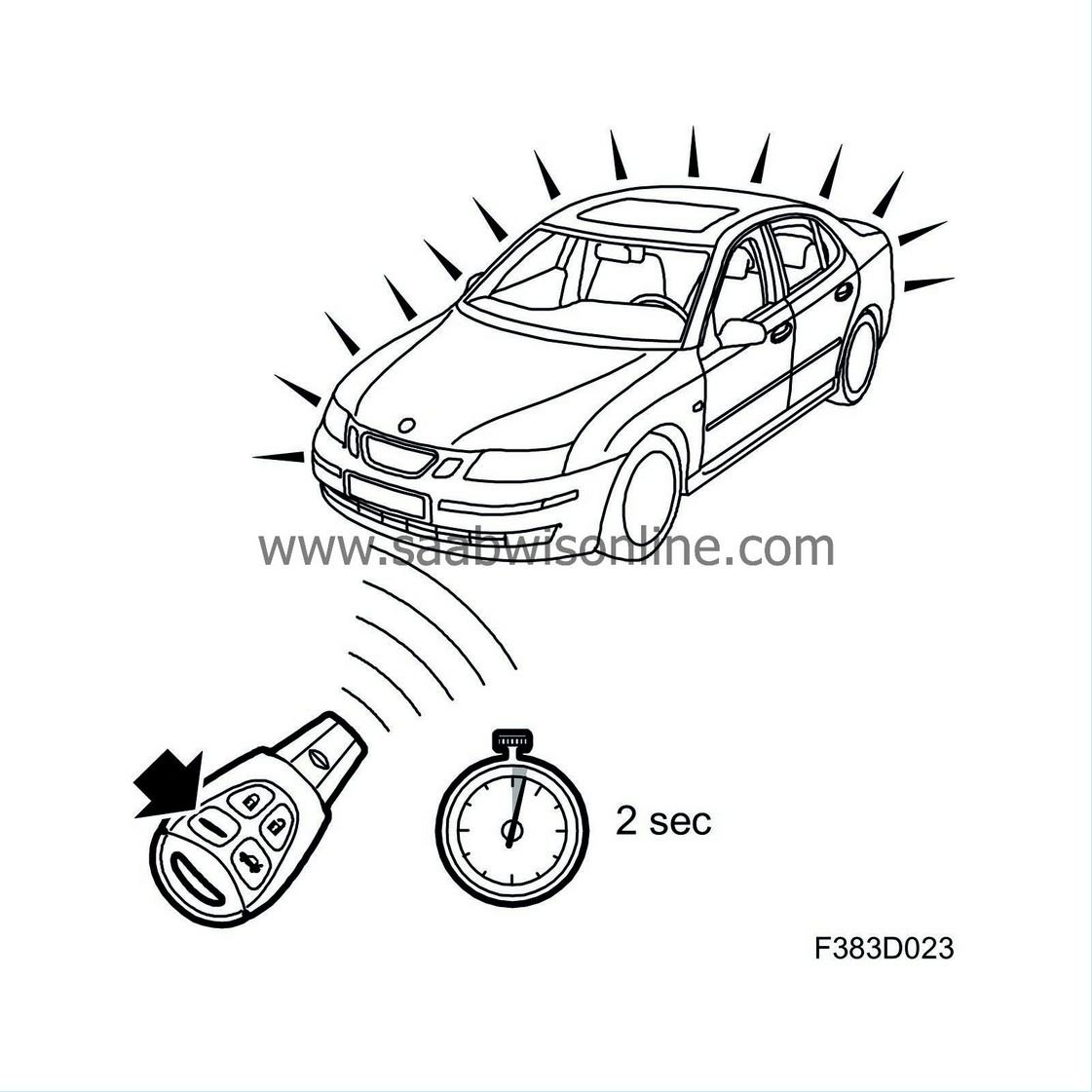
| Note | ||
|
One short press on the remote control's panic button switches the Halo Light on and off. If the panic alarm is activated or deactivated, the Halo Light will be switched off. |


